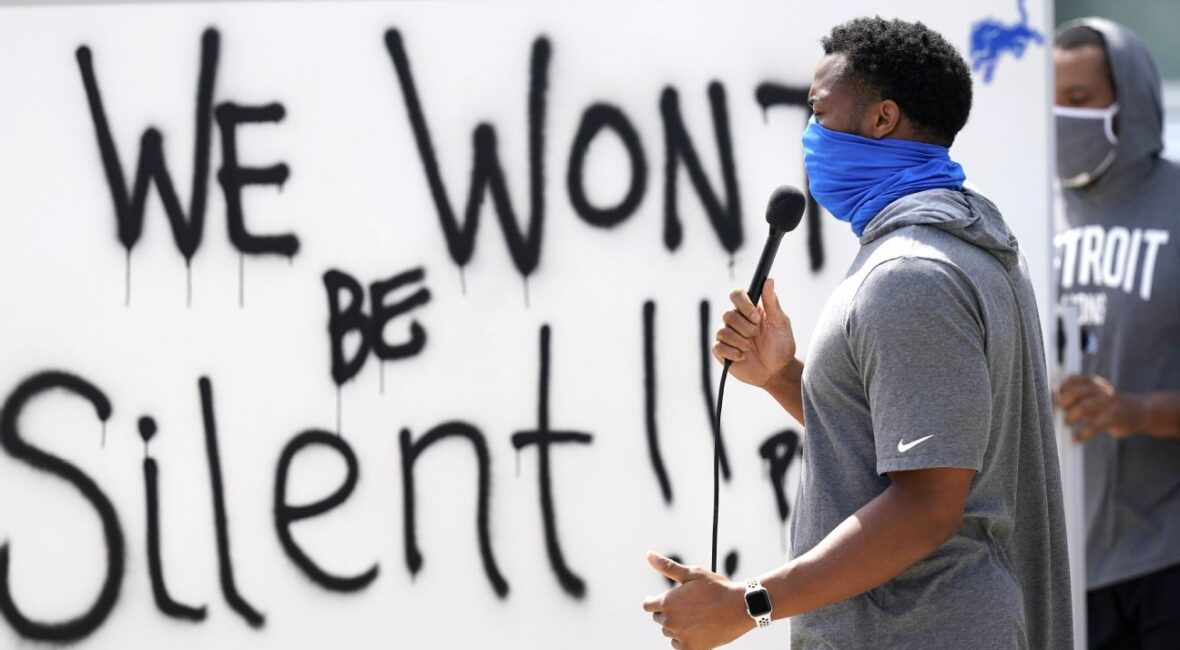CINCINNATI — Bengals defensive end Carlos Dunlap said he and other Black NFL players were discriminated against because of their race during an offseason workout.
On Monday, Dunlap recalled an instance in Fort Lauderdale, Florida, where he and a group of Black players were asked by a park ranger to cease the workout and leave while a group of white NFL players were allowed to continue their drills.
“It was appalling to us and it was very frustrating and it was something that almost made me act out of character,” Dunlap told reporters on Monday.
Dunlap said the incident occurred in late June, one month after George Floyd, who is Black, was killed in Minneapolis in late May when a white police officer knelt on his neck for more than 7 minutes.
According to Dunlap, the two groups of NFL players were separated by two fields. A group of young soccer players, which was comprised of mixed ethnicities, was asked to stop. Dunlap said the Black players were “asked to get off the field aggressively as well.” The park ranger, according to Dunlap, allowed the white group to finish its workout.
“We asked them, why did you demand that we leave the field and go to another field when we explained that we were almost done, literally five to 10 minutes, versus the other group that was able to finish the workout,” Dunlap said. “And he pretty much watched and damn-near cheered them on.”
The Fort Lauderdale parks and recreation department, which oversees the park rangers, could not be immediately reached for comment.
1 Related
Dunlap, the Bengals’ all-time sack leader and an 11-year veteran, also spoke about the franchise’s response to Floyd’s death this offseason. The Bengals were one of the last NFL teams to issue a public comment.
A story posted on the team’s website on June 6 announced a $250,000 donation to “community initiatives” and said the team supports fighting “prejudice and discrimination.” Four days later, the team released a statement on Instagram in which executive vice president Katie Blackburn said the franchise was looking forward to “continuing to listen and to working together as one connected team to better our society.”
Dunlap said the team’s approach to a response was something the players noticed.
“They had their reasoning for it,” Dunlap said. “The players, some of them received it very well. Some of us still feel like we still could speak something.”
The former Florida standout said he wants to see the franchise aligned with a strong approach much like that of other companies and teams around the country. Dunlap said if that occurs, the Bengals collectively could create a substantial impact in Cincinnati regarding racial inequality and social injustice.
Bengals president Mike Brown has not issued any public comments about the topic. Brown’s last words on the record came when the Bengals released longtime quarterback Andy Dalton in April.
Dunlap said he hasn’t requested an in-person audience with Brown but wants to have a conversation with Cincinnati’s top executive.
“I don’t want them to check the box,” Dunlap said. “I want them to do something they are passionate about. That way, they’re physically and emotionally invested in it, as we all are.”
Bengals tight end C.J. Uzomah said he and roughly 10 players sit on a team committee designed to create a positive impact in the community. Uzomah said the group is trying to find local objectives to support to show the franchise is united in the cause.
“We’re taking the proper steps and trying to to make sure we shed light on the situation,” Uzomah said. “The owners are in there and players in that committee are asking a lot of the owners to help us with that, to help meet with us when we do certain things and they’re all on board.”


